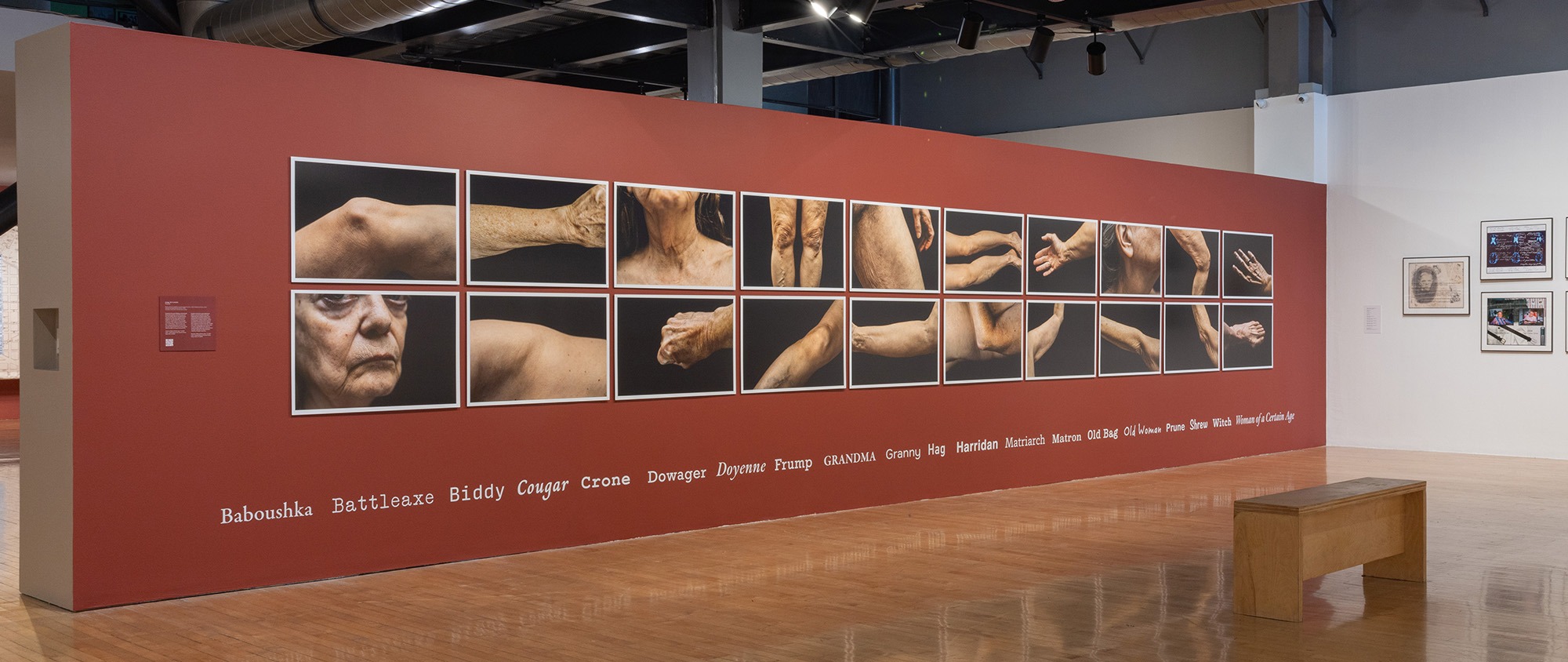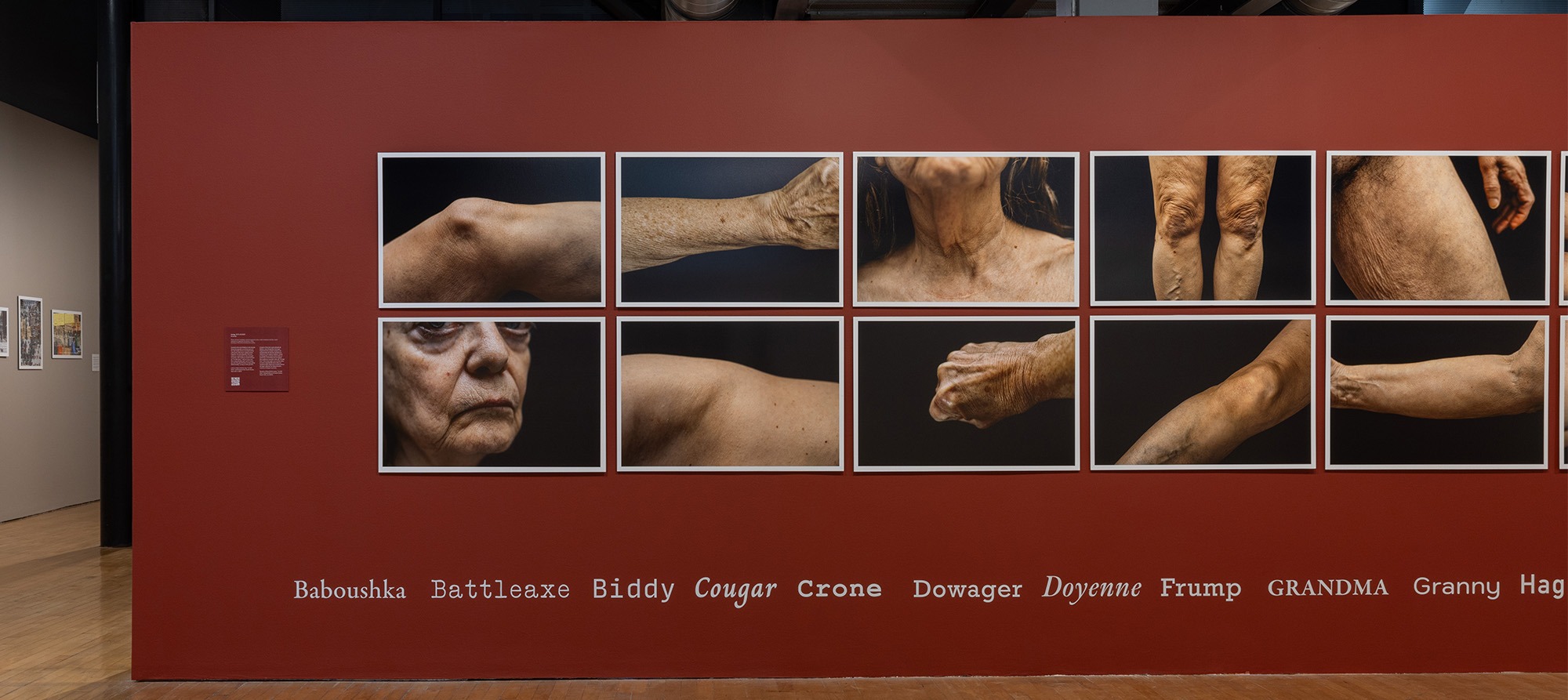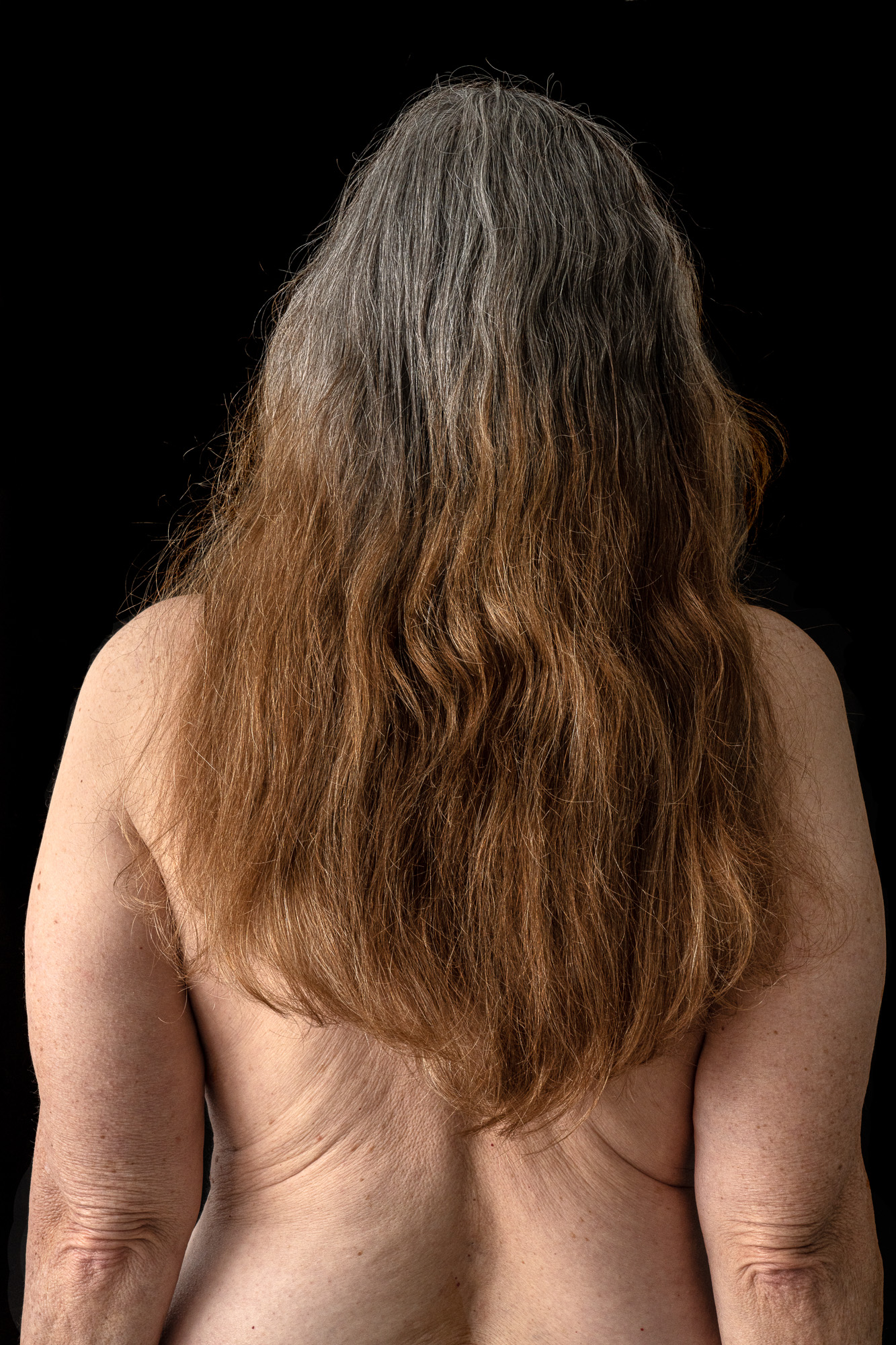


Living addresses the taboo subject of female aging. Time’s effect on women’s bodies is typically not represented realistically or not depicted at all. Compare images of older women with young female nudes or semi-nudes found in art museums and the media. With Living I hope to increase the visibility of older women. Living prioritizes the female gaze. My color photographs replicate the way a woman privately examines her body. In the age of Photoshop most photographs of celebrities and models (regardless of age) are retouched. Plastic surgery is increasingly common, beginning at younger ages. In Living I photograph my unretouched aging body – my wrinkles, sags, veins and age spots. Those “flaws” that often are photographically or surgically removed. The photograph of the back of my head shows various shades of dyed brown, natural brown, and gray hair. This image symbolizes aging and speaks to the pressures to retain a youthful appearance. We see parts of my body seen in public: wrinkly neck, chin, arm, legs, and bunioned foot. To explicitly place this work in a social context, an exhibition will include synonyms for an old woman, such as Cougar, Crone, Granny, and Woman of a Certain Age printed large on a wall. Living can be displayed in a grid or linearly.
These are not soft-focus sentimental images of aging nor are they cold and clinical. The images are an accepting view of aging. The black background removes the body from its environment and signifies voids, unknowable futures, and ultimately death. The 31 x 21 inch “Living” prints are larger than life size. They are not so large, however, as to become abstract, divorced from reality, or read primarily as a formal examination of shape, color, and line. My intention in “Living” is to provide a realistic, affirming look at the aging female body.
“Living “relates to my previous art as I continue to address, without sentimentality, subjects that are overlooked or typically depicted unrealistically. For example, my past work on mothering (from a mother’s perspective) and caregiving to my elderly father include the mundane aspects of such labor. In my cultural history work, inconvenient and unflattering historical facts are not overlooked.
These photographs work towards decreasing the stigma of female aging. Younger viewers will gain a more accurate view of their future and older women will feel affirmed by this imagery. Fortunate are those who live long enough to experience the aging process. All images © 2019-2022 Gail Rebhan

All images © 2019-2022 Gail Rebhan